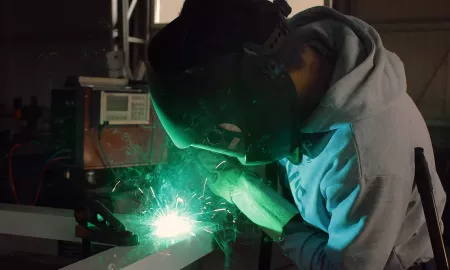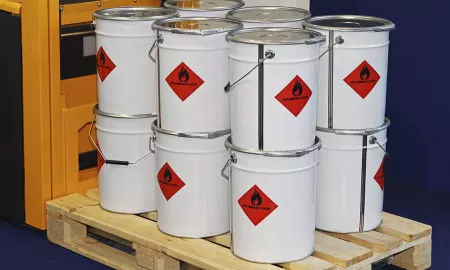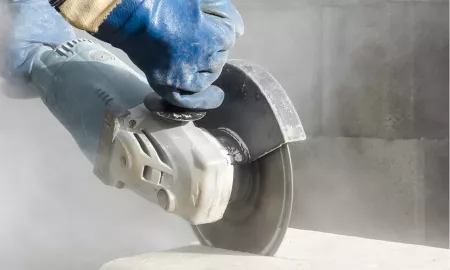With engineering and science built into the modern methods of occupational hygiene and workplace monitoring, there’s a common misconception that occupational hygiene can’t be more than 100 years old. But occupational hygiene has a much longer (and more interesting) history than you would think – and plays a vital role in how occupational hygiene has evolved to modern day standards.

 Early examples of preventative measures
Early examples of preventative measures
Concerns over toxicity in lead date back to the 4th Century BC where Hippocrates was apparently discussing the toxicity of lead in the mining industry, although there is little evidence that anything was done to try and protect workers. This changed in the 1st Century AD when the Romans suggested preventative measures to reduce exposure – marking the earliest record of using respiratory protective equipment (RPE) in the form of animal bladders stretched over the worker’s heads!
Protecting people from the toxic products of chemical welfare came into focus in the 1500s, when Leonardo Da Vinci introduced wet woven cloths as a form of RPE. During a similar time frame, Georgius Agricola was in Europe using engineering methods to protect workers (now a vital stage in the Hierarchy of Control). He designed systems that would provide ventilation to people working in the mines; building a wooden system at the top of the shaft directed the wind into the mine. In addition, there were more complicated structures involving fans and bellows, designed to draw foul air out of the mines so clean air could replace it.
Documenting illness from work
Throughout the centuries, scholars and physicians were writing about people suffering as a result of working with substances. In 1665, Professor Pope wrote about how Mercury miners in Idra became paralytic and died, even commenting on the fact that they never spent more than six hours underground at a time – similar now to workplace exposure limits. Workers in Venice making looking glasses with Mercury were also known to suffer from palsy.
Scholars and physicians aside, workers were also aware that they were becoming ill from their work. However, while science and medicine were being used to try and alleviate the problems, the workers believed that the mines they worked in were inhabited by demons which could only be controlled through fasting and prayer.
A turning point in occupational hygiene history is the death of John Dirrick in 1705. A lead miner, John was the first named person known to have died from an occupational disease. When reporting his death, the village clerk wrote that he spent his working life underground and, as a result, suffered with a shortness of breath.
A growing awareness
In the 1700s, there was a greater awareness of people becoming ill when working in industry, with concerns for those working in the growing Staffordshire pottery industry and their exposure to - what we now know is - crystalline silica. It was quickly spotted that the inhalation of the dust (which was produced by the grinding of the flint) caused a fatal disease, now known to be silicosis.
Thomas Benson, a decorator in London, heard about the fatalities in Staffordshire and borrowed money to see if his way of grinding colours could be adapted to grind up the flint. In 1726, he was successful and a patent was granted for the wet grinding of calcined flint. This is, perhaps, the first example of a wet process being used to substitute a dry process. The realisation hit the scientific communities in the 1790s when workers were dying of the same diseases - but working across different industries to include needle grinders, potteries using calcined flint and mining sandstone. However, silica was not determined to be the culprit for several decades yet.
Noise as a cause for workplace illness was acknowledged for the first time in 1830. Charles Turner Thackrah suggested that corn mill workers put cotton wool in their ears to protect themselves from the effects of noise. The last group of people who seemed to come to the realisation that something needed to be done to help the workers was the government.
Beginning of legislation
The Factories Act 1833 was the first time that the government showed an interest in the health of the working man. As a result, new regulations and laws were put into place which has since developed into the modern day legislation implemented today.
While the legislation and medical understanding associated with occupational hygiene are relatively modern, it is easy to see how history has shaped occupational hygiene into what is today.
The HSE (only formed in 1975) details a timeline that brings modern occupational hygiene regulations up to date. Regulation and legislation is now extensive to ensure workplace illness is minimised, including COSHH Regulations, Control of Noise at Work Regulations and Control of Vibration at Work Regulations. That said, there are still 1.4 million working people suffering from a work-related illness in 2017/2018 – according to HSE statistics – with plenty more work to be done on raising awareness about safe working practice in the UK.
Take a look at our article ‘Treating Health Like We Treat Safety’ which delves into why hundreds of thousands of people in the UK are still being made ill by their work each year.
Want to discover more about SOCOTEC's Occupational Hygiene services?

You might also like







Add new comment